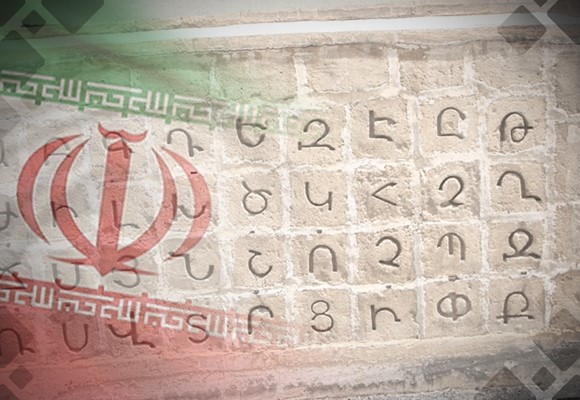
Armenian font alik free#
Several countries of the region had been certified by the WHO as free of local malaria transmission as a Since then, considerable progress has been achieved in the countries of the region, signified by the dramatic reduction of malaria incidence in conjunction with the prevention of re-establishment of infection on the territories where malaria was eliminated earlier. A political document “From control to malaria elimination” known as the “Tashkent Declaration” was unanimously endorsed by the member-states of the WHO/EUR with malaria problems in 2005. I don't know if the letter "p" isn't a joke of the author (the overturned "b").Malaria control and preventive activities in the countries of the World Health Organization Region for Europe (WHO/EUR) were strengthened within the framework of the Regional Roll Back Malaria strategy adopted by the member-states at the beginning of the 2000s.

He is the best ManchuĪnd Mongolian teacher in The University of Warsaw, Poland. Native speakers of Manchu or somebody who speaks Manchu as well as the native speakers do.įor the present I'm sending this e-mail to Mr. (speak, write, read, translate) them but to compare them one with each other). Manchu is very poor (I learn the foreign languages not to use I'm afraid I can't do it because of the orthography. The possibility of the transcription and the translation We don't know if the Voynichese alphabet isn't older than the Greek one.

the letter of san / sampi existed since 403 B.in 16th century, when Manchu alphabet was created,the aspirants existed no more in this.the neo-Punic alphabet was created in 3rd century B.the Arabic alphabet was created in 3rd century B.The manuscript was written probably some centuries B. Compare them toĪrmenian, Georgian, Greek, Hebrew or Roman alphabets, too. Probably they are analogical with Arabic. Letter of "j" stands for 3, the letter of "th" (like in "this") stands for 4. The pre-Manchu letters stand for the numbers.In Manchu it lost the letter of "u" and is spelt in one word. The pre-Manchu word of "ungge" creating the nouns of the future tense is generally.The palatal "a" and "e" are written as "i" the labial "a" and "e" are written as "u".The pre-Manchu "wo", "wu", "wi" became "fo", "fu", "fi" in Manchu."bi" you can read as "abai, abaya, abi, abiya, abu,īai, baya, bei, beye, bi, biya, biye, bu, ebei, ebeye, ebi" or "s^un" as "as^un, as^uwan,Įs^un, es^uwan, s^un, s^uwan, s^uwen". The most difficult is using of "i / y / u" and "u / w", especially if a word doesn't.It doesn't matter if the vowels are the same. The standard "a" or "e" beginning words are not written.Of "o" ending words you can read as "u" or "u" because of the contraction of "ao" to "u"Īnd "eo" to "u", e.

Compare it with Hindi and French : ai = e. It means the letter of "e" in the words including "i" Sometimes pre-Manchu words are not similar to Manchu words, e.If a word doesn't include a velar or aspirant and includes "u" or "o", the missing.If a word doesn't include a velar or aspirant and includes "i", the missing vowels are.Does a word include a velar or aspirant the missing vowels are "a".The standard "e" is not written if it isn't necessary.Note: the lines starting with "?" on the table correspond to Voynichese characters given in ZB's chart that do not have an obvious EVA transcription. "u" in German "Suppe", "u"in french "une", bilabial "w", bilabial "f" Like "e" in English "enoughug", or "y"in English "yellow" or "w" in Japanese. Like "z" in English "zone" or German "Suppe"Įmphatic "t", as in Arabic "t.alik.", divorceeĮmphatic "ð" as in Arabic "ð.uba" (arrow-head)Įmphatic "d" like Arabic "d.abu" (Hyena") Non syllabic (final sound) like "s" in german "das" Like "r.h" in Hindi "par.hnä" (to learn") Palatal like "gy" in Hungarian "vagyok" (I am) Voiced, like "h" in Czech "hlas" (voice) or "g" in Dutch "goed" (good) Palatal "t" like "ty" in Hungarian "kutya" (dog)
Voiced "c" like "dz" in Polish "dzwon" (bell) Velar, like "kh" in Arabic "t" in "t.alik." (divorcee) Please check whether the following characters match their description: č c-caron
Armenian font alik iso#
This page uses some HTML entities that are not part of ISO Latin-1 and requires a modern browser with Unicode font support. The letter list and phonetic chart sent to JS on -13, respectively. This page presents Zbigniew Banasik's interpretation of the VMS alphabet, according to


 0 kommentar(er)
0 kommentar(er)
